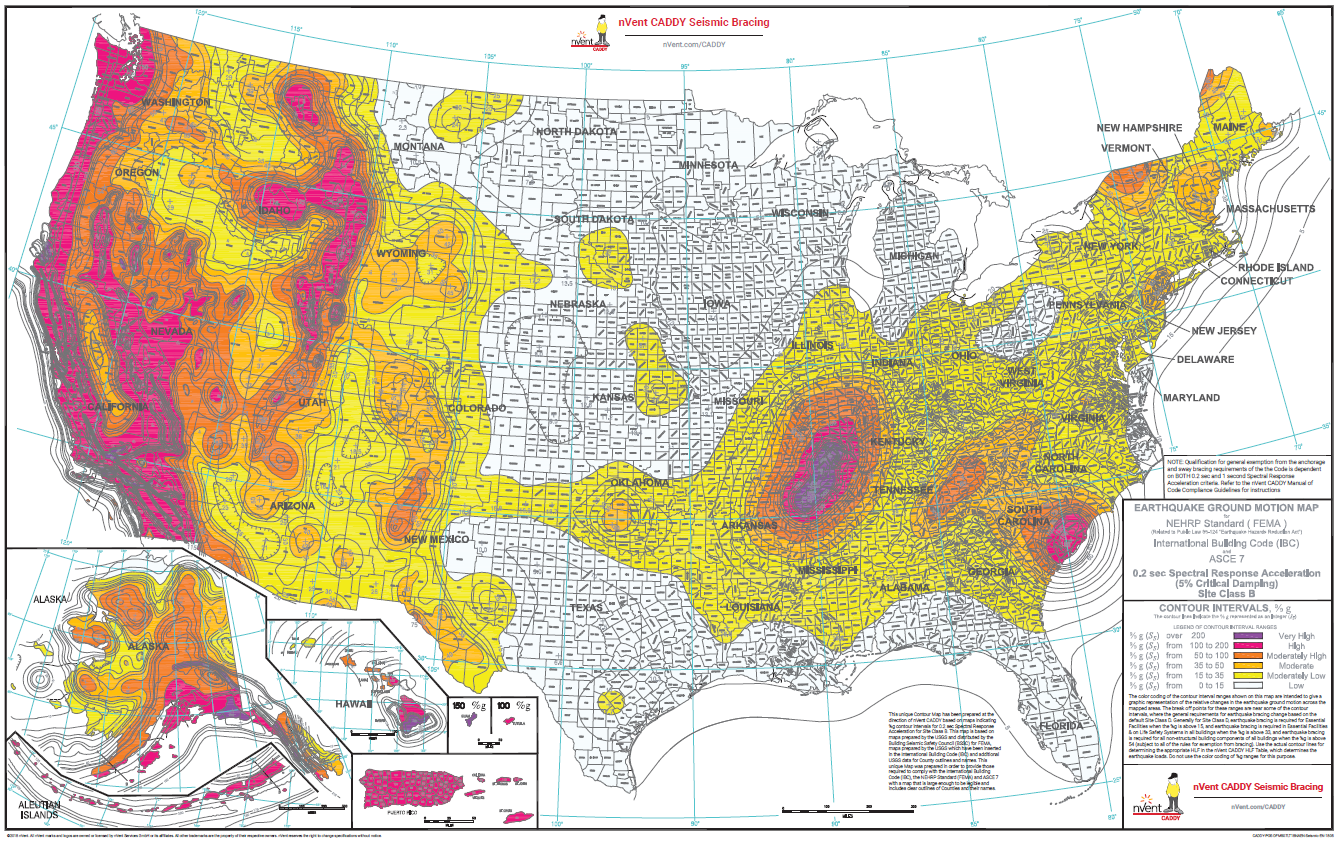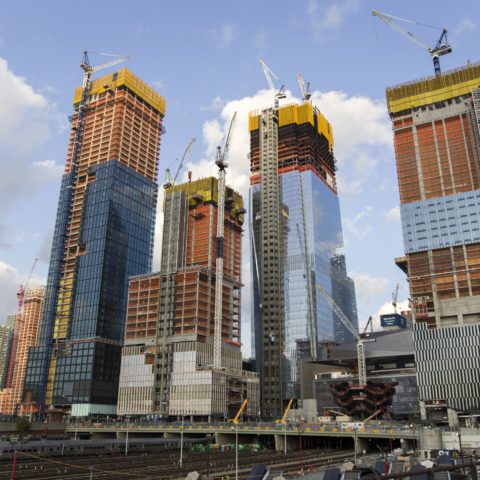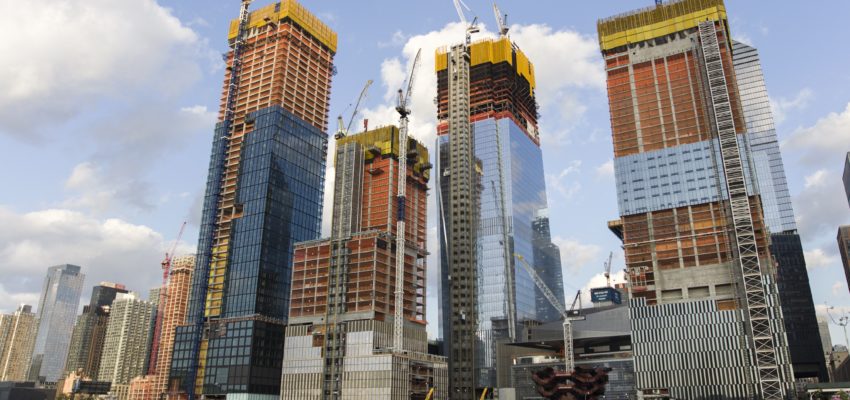Components of a Quality Seismic Protection System
When it comes to quality seismic protection system, several potential hazards should be accounted for, but necessary components can be simplified into seven considerations. Those are:
- Brace anything that can sway or collide
- Anchor anything that can slide or tip over
- Allow for flexibility where differential movement is expected (i.e., with flexible pipe couplings)
- Leave appropriate clearance around each system
- Engineer the load path design
- Test the product for the application
- Inspect the installation
The last two points are particularly important because codes and standards are not always understood or accurately communicated. Some products may be marketed for a specific installation for which they are not actually tested.
While unique situations may require additional components, these seven points are good rules of thumb when considering a project’s seismic protection needs.
Building Risk Category
The requirements for seismic protection depends on the building risk category or risk classification as well as the seismic zone in which the building is located. The higher seismicity of the location and greater the building occupancy, the more stringent the requirements. For example, a military or healthcare facility in a generally seismically calm area will typically require bracing because of the building’s importance.
Seismicity of the Location
Seismicity of a location should be considered when a building is being designed. This is impacted by several factors like the epicenter of an earthquake, the depth and magnitude, and the type of fault movement that can determine how widespread the impact is. Several states and countries have specific codes and standards that should be consulted.

Many countries have developed seismic zonation maps. If the structure is in a zone classified as having some level of seismicity, which is the case of most areas, considerations must be given for seismic bracing. Consult local codes or contact nVent CADDY application engineers for the unique needs of your installation.


